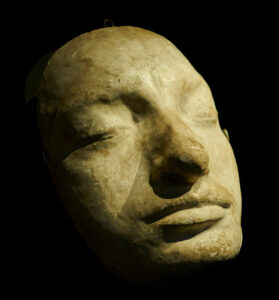
City of Zurich Construction History Archive
Over on Freigut!
At the beginning of the 20th century, Zurich attracted scores of Jewish families. Jewish culture gained a toehold in the city, and new synagogues were built as a result. Like the one on Freigutstrasse, for example.
‘On major Jewish holidays, the whole family would turn out at the Freigutstrasse synagogue. Since the prayer hall was always crammed full, as the youngest member of the family I always had to look around for an empty seat. Outside the synagogue, not far from Selnau station, people gathered on the forecourt in the intervals between prayers, strictly separated by sex, of course,’ recalls Roger Reiss in his memoir Szenen aus dem Zürcher Stetl of his first encounters with the Eastern European Jewish community’s holy place of worship in Zurich’s Enge district.
In 1900, no city in Switzerland boasted such a vibrant Jewish life as Zurich. In the years following the legal emancipation of 1866, the city became a magnet for Jewish families from within Switzerland and further afield. The first wave came from southern Germany and Alsace, and from the Jewish villages of Endingen and Lengnau in the Surbtal valley. And just a few years later, word circulated among the Jewish populations of Eastern Europe that the streets of Zurich were paved with ‘parnosse’ (Yiddish: money, income). In the ‘statistics on Jewish migration’ for the city of Zurich, a total of 7,997 Jewish immigrants from Eastern Europe are recorded for the period from 1911 to 1917. They came from Russia, Russian Poland and Galicia. Most of these people were following relatives who already lived in Zurich, as depicted by Kurt Guggenheim in his monumental Zurich-set novel cycle ‘Alles in Allem’ (All in All): ‘Leib,’ said the man in the black hat, ‘We’re here.’ ‘Everyone?’ − ‘Sidia and the children are downstairs.’ ‘Mama,’ yelled the boy in shirt sleeves, ‘Mama, Ruben has come, and the whole family.’

At the beginning of the 20th century, Zurich was a popular destination for Jews. Immigration increased and Jewish life flourished in the Swiss city.
Swiss National Museum
One characteristic of Zurich’s rapidly growing Jewish community was that the immigrants continued to practice the rites passed down from their forebears, which differed in many ways from those enacted by the established, southern Germany-influenced Israelitische Cultusgemeinde Zürich (ICZ) community. As a result, in about 1900 the Jews who had immigrated from Eastern Europe established their ‘own’ Jewish congregation, the Israelitische Religionsgesellschaft Zürich (IRGZ), and subsequently created their own institutions. But for many years there was no place of worship that would meet the needs of the rapidly growing community. In 1917, the IRGZ managed to secure a share in the change of use of the Landolt property, on a small hill in Selnau. In 1918 an architect was sought through a tender process, but financing of the construction was not secured until spring 1923.

Laying of the foundation stone of the synagogue on Freigutstrasse in Zurich, 1923.
Israelite religious community in Zurich
The building permit, based on the design of Zurich architects Henauer & Witschi, met with some anti-Semitic objections. These objections claimed that the ‘eastern-influenced architecture’ did not fit with its immediate surroundings, and in addition the building would attract an influx of ‘highly undesirable immigrant strangers’. ‘There is thus no justification […] for making an exception for this exceptional situation of an unnecessary building. […] If, subsequently, the whole of Selnau is bought up by the Jews, then they can be given permission to build their synagogue.’ Even the Baupolizeiinspektor (official from the department of building regulation) made no secret of his hostile attitude to the scheme. But Zurich City Council was not deterred. The Council endorsed the opinion of its experts, who found in regard to the aesthetic appraisal of the building structure that the building’s design had no visual impact or substantial detrimental effect on the appearance of the street, the urban landscape or its surrounds.

Interior view of the synagogue on Freigutstrasse in Zurich.
Archives of Contemporary History / Michael Richter
The foundation stone was ceremonially laid on 14 September 1923, and a year later, on 17 September 1924, the synagogue at Freigutstrasse 37 was officially opened. The Swiss construction journal gave the unusual building an elaborate tribute in its issue 1/1925: ‘Like church construction generally, synagogue building also lacks a living, that is, mandatory, tradition. […] If, then, we accept this view as fact, in must be said that the exercise has in the present case found a very pleasing solution and that there are very many Protestant and Catholic communities that should envy this Jewish community its place of worship.’



